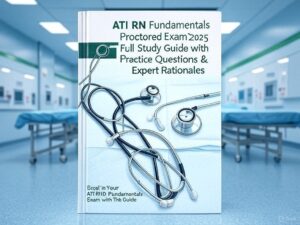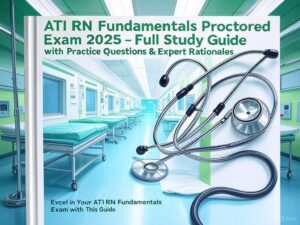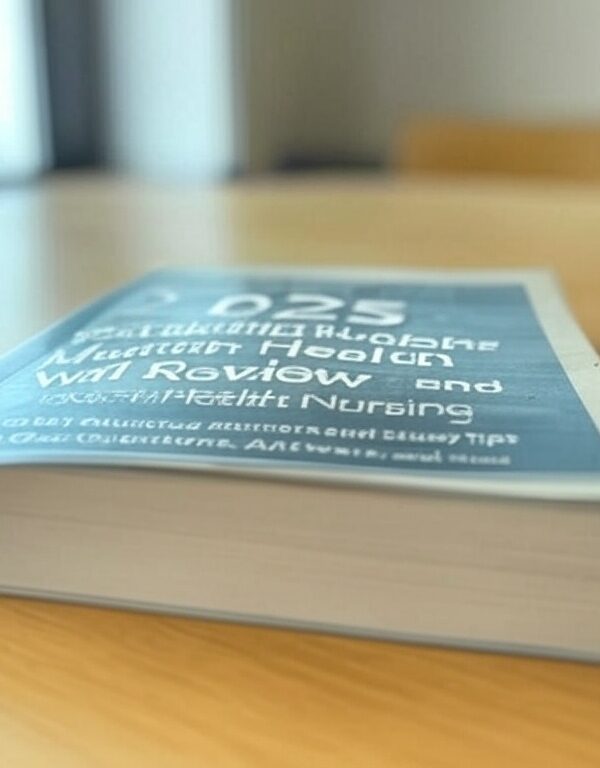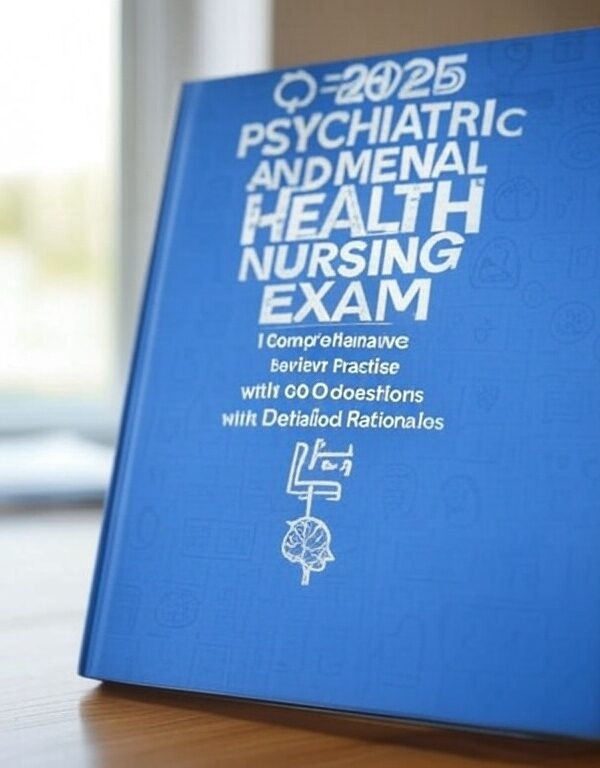-
Full study guide for ATI RN Fundamentals 2025
-
Practice questions with expert rationales
-
Focuses on nursing fundamentals concepts
-
Ideal for nursing students preparing for the proctored exam
-
Enhances critical thinking and exam readiness
Preview
Question 1: Respiratory Rate Measurement Guidelines
A nurse is instructing a group of nursing students in measuring a client’s respiratory
rate (RR). Which of the following guidelines should the nurse include? (Select all
that apply.)
A. Place the client in semi-Fowler’s position
B. Have the client rest an arm across the abdomen
C. Observe 1 full respiratory cycle before counting the rate
D. Count the rate for 1 min if it is regular
E. Count and report any sighs the client demonstrates
Correct Answers: A, B, C
Rationale:
• A. Semi-Fowler’s position promotes full lung expansion and accurate RR
assessment. ✅
• B. Placing an arm across the abdomen makes respiratory movements easier to
observe. ✅
• C. Observing one full cycle before starting ensures the rhythm and depth are
understood. ✅
• D. For a regular RR, counting for 30 seconds and multiplying by 2 is typically
sufficient. Count for a full minute if the rhythm is irregular.
• E. Occasional sighs are a normal part of respiratory function and do not typically
require reporting unless excessive.
Question 2: Elevated BP on Admission
A nurse is admitting a client who has a fractured femur and obtains a blood
pressure reading of 140/94 mmHg. The client denies any history of hypertension.
Which of the following actions should the nurse take next?
A. Request a prescription for an antihypertensive medication
B. Ask the client if she is having pain
C. Request a prescription for an anti-anxiety medication
D. Return in 30 minutes to recheck the client’s blood pressure
Correct Answer: B
Rationale:
• B. Pain is a common cause of elevated blood pressure. The nurse should assess
for pain before considering other interventions. ✅
• A. It is premature to request antihypertensives without determining the cause.
• C. Anxiety could also affect BP, but pain is more likely with a fracture and should
be assessed first.
• D. While rechecking is appropriate, pain assessment should come first.












Reviews
There are no reviews yet.